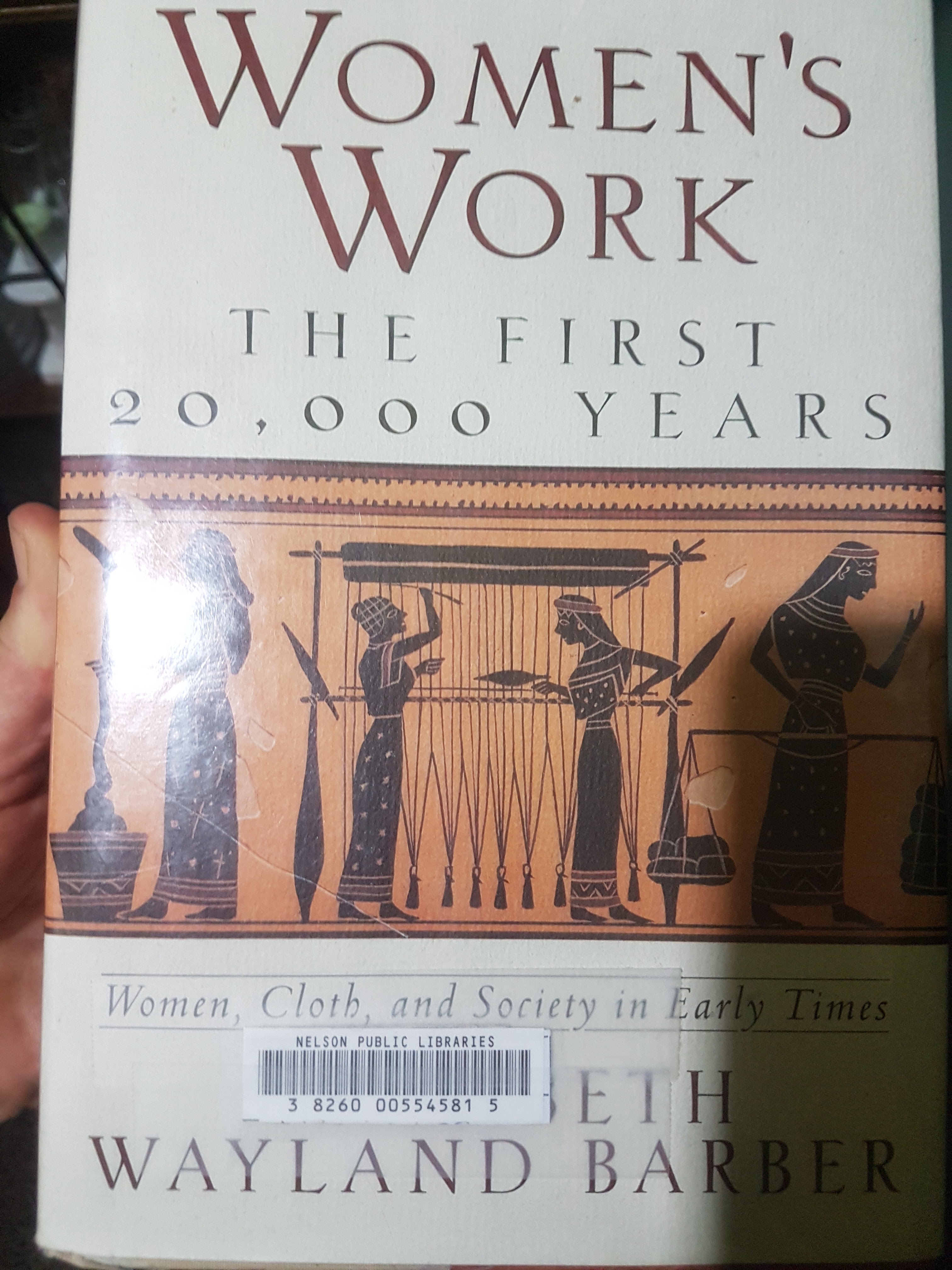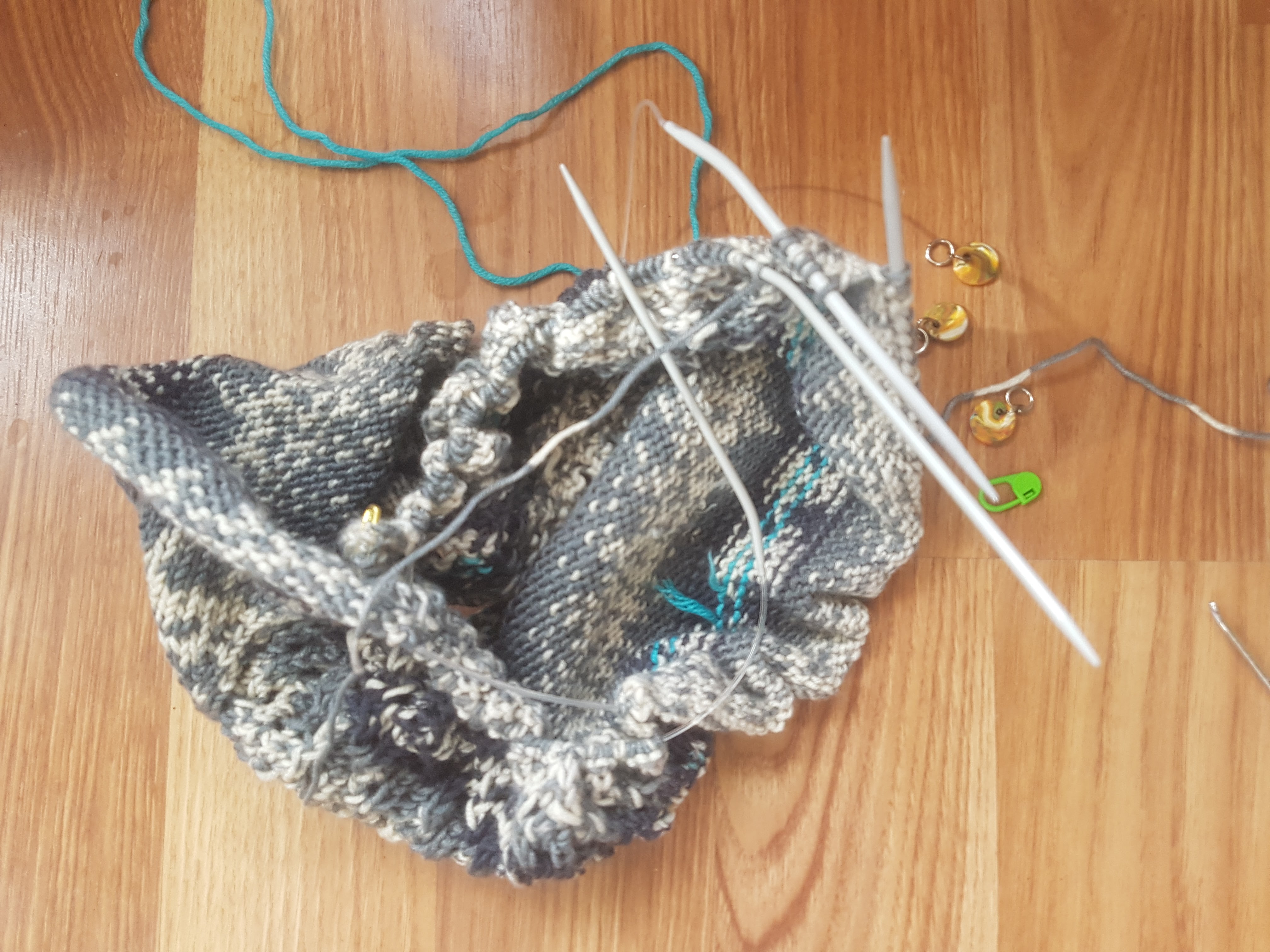
I am reading a book called WOMEN’S WORK, The First 20,000 Years, Elizabeth Wayland Barber. One of the factors she talks about as influencing what work was Women’s work was to do with what you could practically do while you were watching/looking after children. She goes on in the book to discuss the importance of women’s work in making cloth, the innovations, the scale of their enterprise and business nous. We are talking about pre written language here, times when the stories were woven into the fabric literally not as some figure of speech but actual pictures of people wearing the elaborate clothes they use to wear.
I understand this as doing the homeschool thing means that I can only choose to do things that allow me to bring my 10 year old sidekick, and that is how I want our life to be. In one of the tablets written thousands of years ago, relatively recent history, there is a written count of all the people working and their rations. These people include the women, apprentices – young girls, and children, also boys. Not only did these women get to have their children with them but those children were learning skills that meant they had a career, opportunities, they learnt something practical.
This book is also making me feel different about the priorities of school content. I know that Steiner schools do do a lot of craft, to simulate creativity, but do other schools not do craft as an essential thing to learn (especially weaving, knitting) because it is women’s work and therefore not as worthwhile as other stuff? And that slight dig at craft not being art, art being superior in some way and that is how you express creativity. I feel we have gone wrong somewhere.
Women’s Work started with the author trying to recreate a 3000 year old woven relic that required her and her sister to work together (it was a job requiring more than one person) and then the author said how the physical act of doing this weaving lead to her having greater understanding “by trying to imitate the product I discovered not only which way this shed was woven and some criteria for analyzing other pieces but also several interesting details about how Jallstatt weavers worked.”

I know we have machines to do our work for us and labour has got to the point that we do such narrowly defined roles in our work but there is so much satisfaction in doing it yourself.
I am thinking of all this as I bottle fruit and tomatoes and I feel a connection to my mother as I learnt how to bottle from watching her -unfortunately she died before I could ask for details as I wasn’t interested at the time. I feel connected to all the women, mainly, before me whose job it was to preserve food. I do this all on my own as Helena isn’t interested just as I wasn’t but she does think this is a normal activity even in the age of the supermarket. It would be nicer to do this as a community where the information, and labour is shared and stories are told to wile away what is a relatively menial task, as I can keep an eye on my child… It feels so good to feel part of a long line of people doing something so concrete and practical.

This book may be about women’s work in the first 20,000 years but it is so relevant to now, somethings are just true
- people learn by doing
- children are learning by watching what their parents do
- people like to tell stories
- people like to work together
- it is through producing work for your own benefit (rather than being told/paid to) where you do your best work and innovate – like those women did on their own costumes.
Pennie Brownlie (Magic Places)also stresses learning by doing, the importance of doing physical things with our hands. She makes the statement that we are a making species…. I just love making stuff, and thinking about making stuff, especially stuff that is useful to my family and friends. Helena does to, it’s important kid stuff like her farm.

